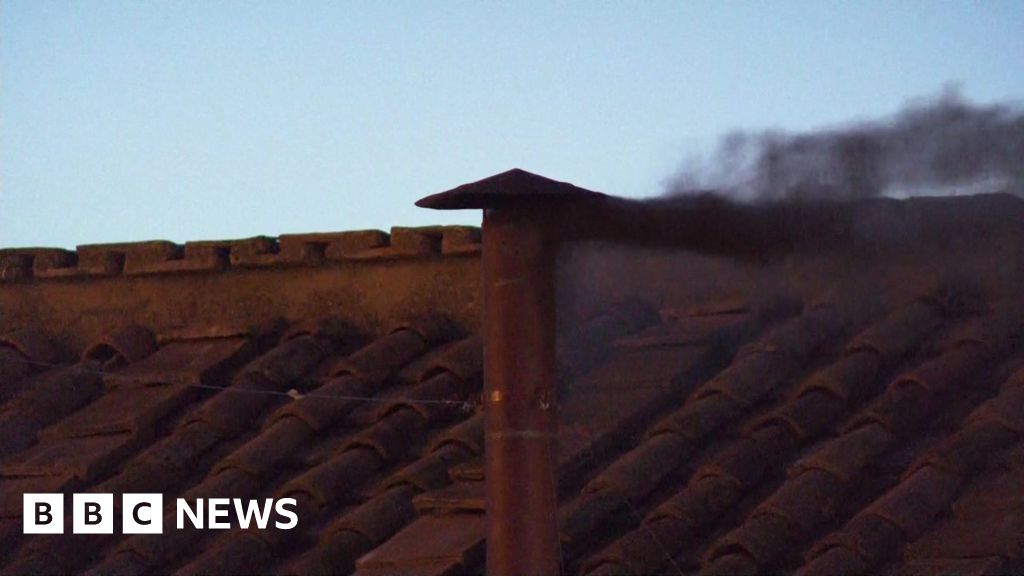A robotic Soviet spacecraft has been adrift in space for 53 years. It will return to Earth later this week.
Kosmos-482 launched in March 1972. If all had gone well, it would have landed on the sweltering surface of Venus and become the ninth of the uncrewed Soviet Venera missions to the planet. Instead, a rocket malfunction left it stranded in Earth orbit. Kosmos-482 has been slowly spiraling back toward our world ever since.
“It’s this artifact that was meant to go to Venus 50 years ago and was lost and forgotten for half a century,” said Jonathan McDowell, an astronomer at the Harvard & Smithsonian Center for Astrophysics who maintains a public catalog of objects in space. “And now it’s going to get its moment in atmospheric entry — albeit on the wrong planet.”
Cloaked in a protective heat shield, the spacecraft, weighing roughly 1,050 pounds, was designed to survive its plunge through the toxic Venusian atmosphere. That means there’s a good chance it will survive its dive through this one, and could make it to the surface at least partly intact.
Still, the risk of any injuries on the ground is low.
“I’m not worried — I’m not telling all my friends to go to the basement for this,” said Darren McKnight, senior technical fellow at LeoLabs, a company that tracks objects in orbit and monitors Kosmos-482 six times a day. “Usually about once a week we have a large object re-enter Earth’s atmosphere where some remnants of it will survive to the ground.”
When will Kosmos-482 come back to Earth?
Estimates change daily, but the predicted days of re-entry are currently Friday or Saturday. The New York Times will provide updated estimates as they are revised.
One calculation of the window by the Aerospace Corporation, a federally supported nonprofit that tracks space debris, suggests 12:42 a.m. Eastern time on May 10, plus or minus 19 hours.
Marco Langbroek, a scientist and satellite tracker at Delft University of Technology in the Netherlands who has tracked Kosmos-482 for years, puts the estimate closer to 4:37 a.m. Eastern on May 10, plus or minus a day.
Where will it land?
No one knows. “And we won’t know until after the fact,” Dr. McDowell said.
That’s because Kosmos-482 is hurtling through space at more than 17,000 miles an hour, and it will be going that fast until atmospheric friction pumps the brakes. So getting the timing wrong by even a half-hour means the spacecraft re-enters more than half a world away, in a different spot.
What’s known is that Kosmos-482’s orbit places it between 52 degrees north latitude and 52 degrees south latitude, which covers Africa, Australia, most of the Americas and much of south- and mid-latitude Europe and Asia.
“There are three things that can happen when something re-enters: a splash, a thud or an ouch,” Dr. McKnight said.
“A splash is really good,” he said, and may be most likely because so much of Earth is covered in oceans. He said the hope was to avoid the “thud” or the “ouch.”
Will the spacecraft survive impact?
Assuming Kosmos-482 survives re-entry — and it should, as long as its heat shield is intact — the spacecraft will be going around 150 miles an hour, when it smashes into whatever it smashes into, Dr. Langbroek calculated. “I don’t think there’s going to be a lot left afterward,” Dr. McDowell said. “Imagine putting your car into a wall at 150 miles an hour and seeing how much of it is left.”
The heat of re-entry should make Kosmos-482 visible as a bright streak through the sky if its return occurs over a populated area at night.
If pieces of the spacecraft survive and are recovered, they legally belong to Russia.
“Under the law, if you find something, you have an obligation to return it,” said Michelle Hanlon, executive director of the Center for Air and Space Law at the University of Mississippi. “Russia is considered to be the registered owner and therefore continues to have jurisdiction and control over the object.”
How do we know the identity of this object?
Some 25 years ago, Dr. McDowell was going through NORAD’s catalog of roughly 25,000 orbital objects and trying to pin an identity on each. “Most of them, the answer is, ‘Well, this is a piece of exploded rocket from something fairly boring,’” he recalls.
But one of them, object 6073, was a bit odd. Launched in 1972 from Kazakhstan, it ended up in a highly elliptical orbit, traveling between 124 and 6,000 miles from Earth.
As he studied its orbit and size, Dr. McDowell surmised that it must be the wayward Kosmos-482 lander — not just a piece of debris from the failed launch. The conclusion was supported by multiple observations from the ground, as well as a recently declassified Soviet document.
Source link
















